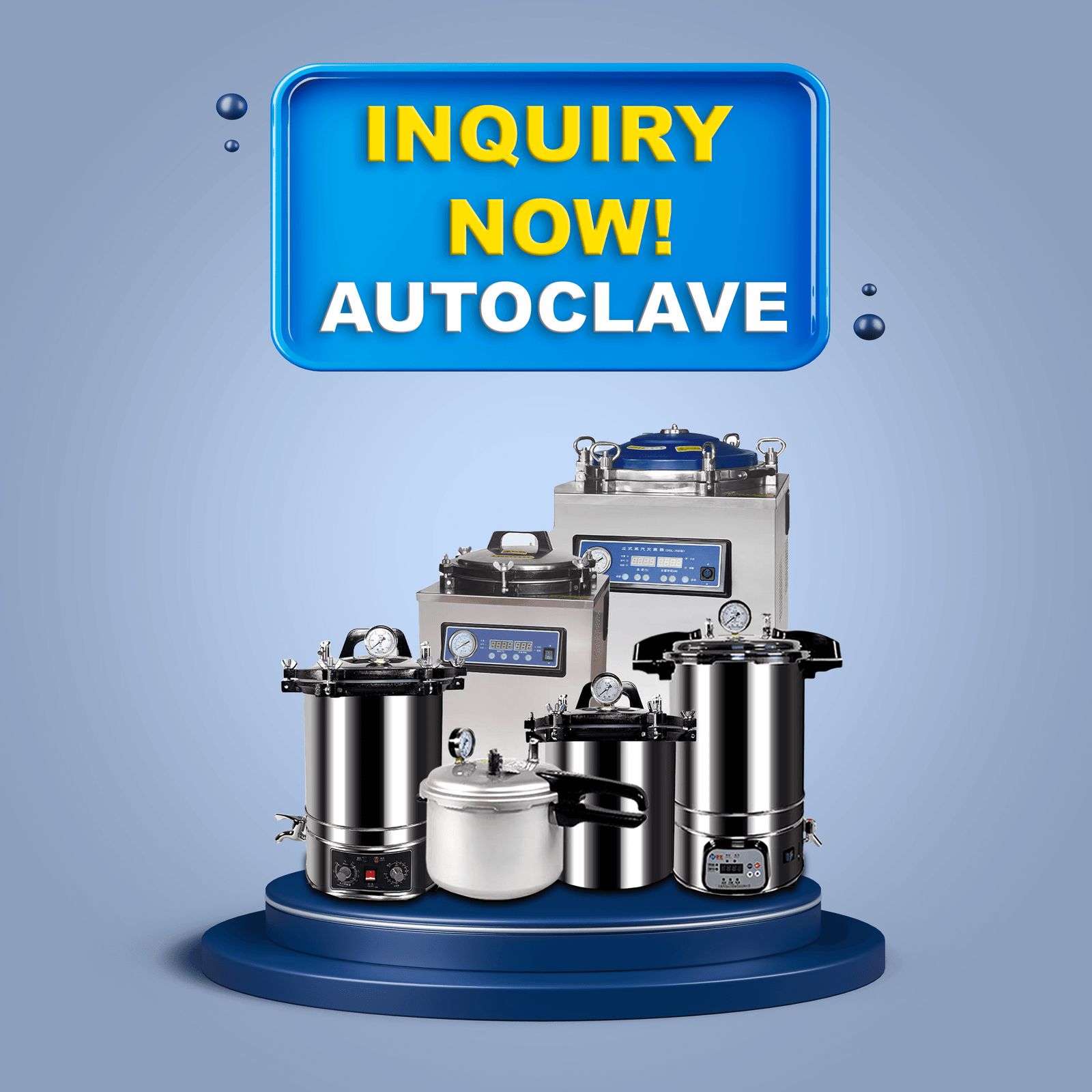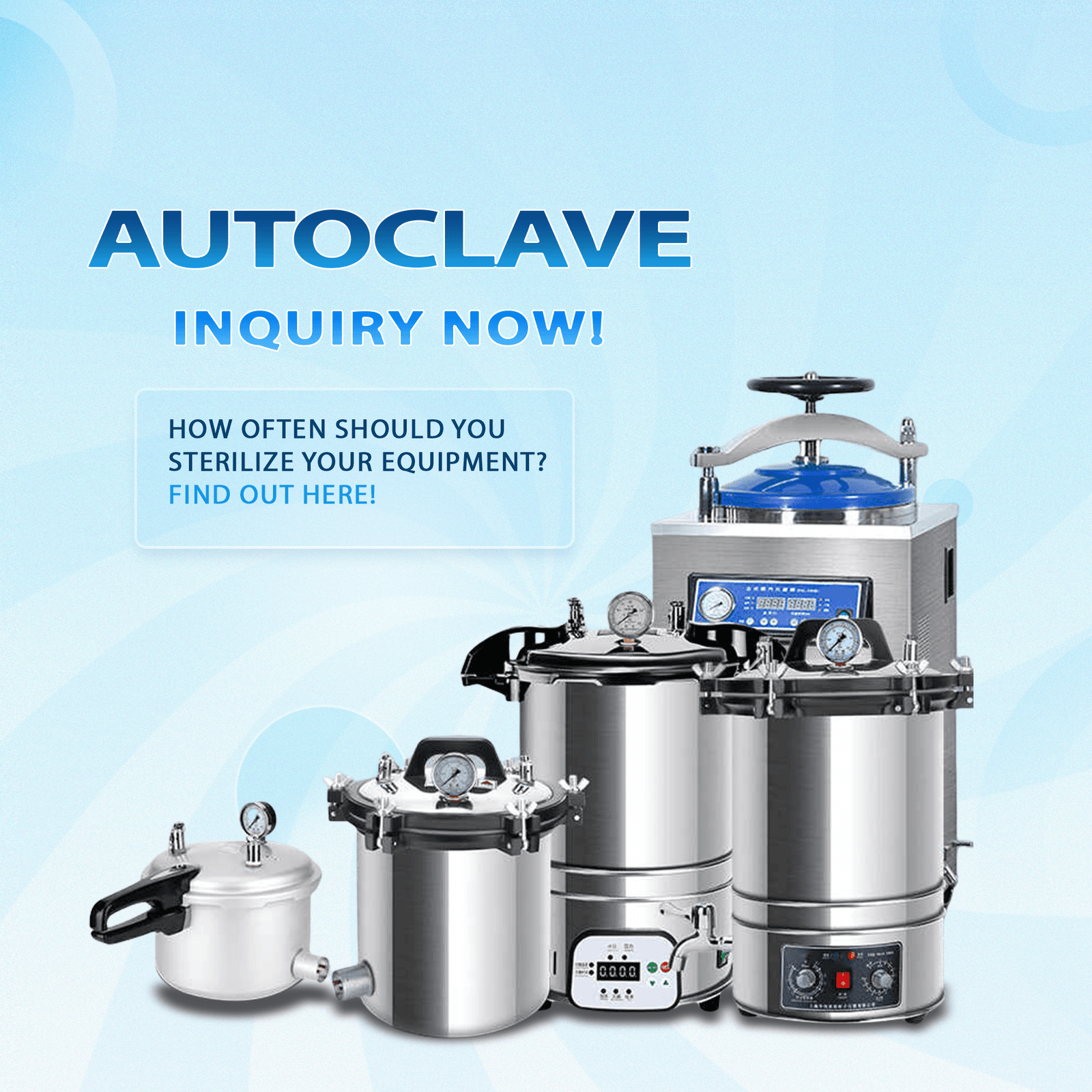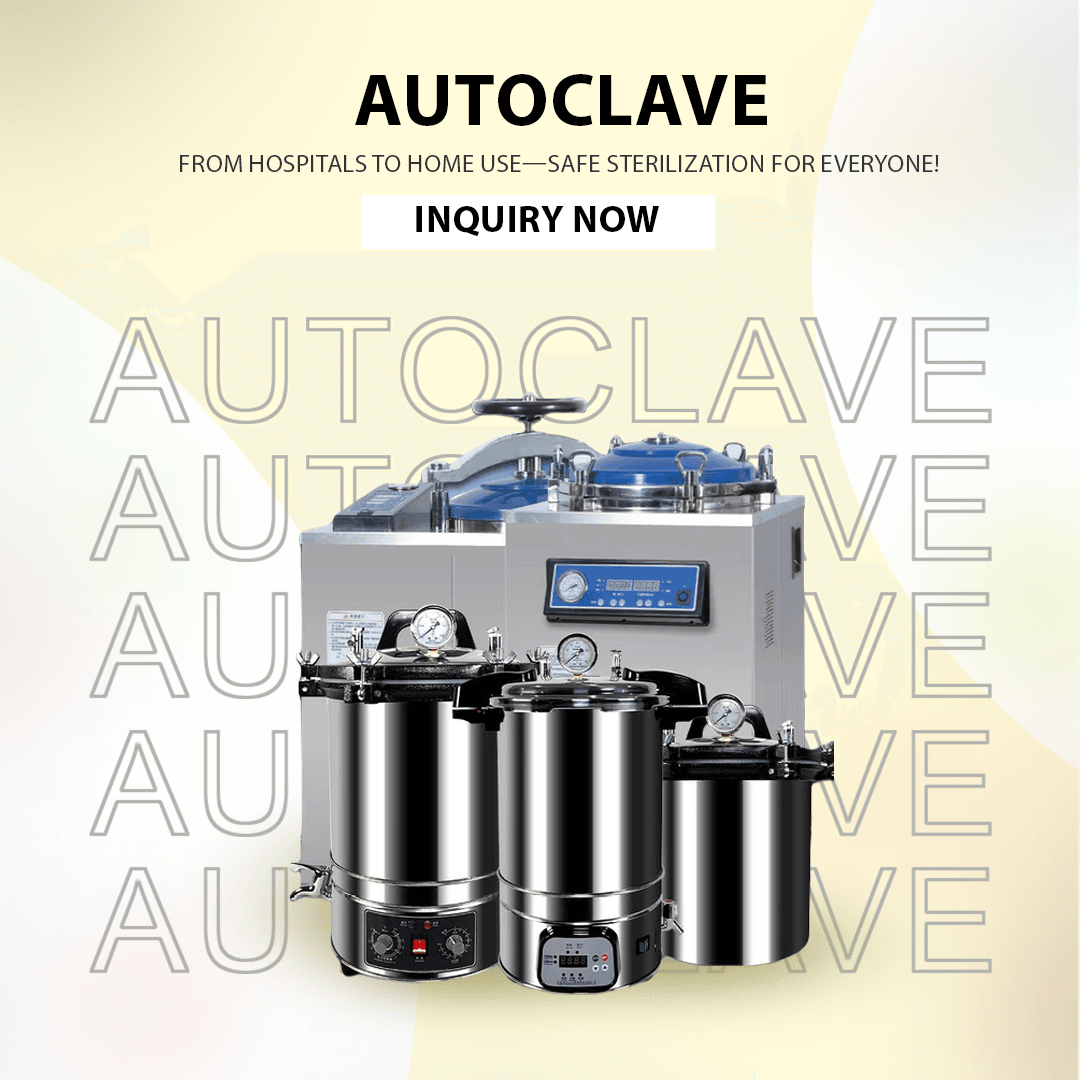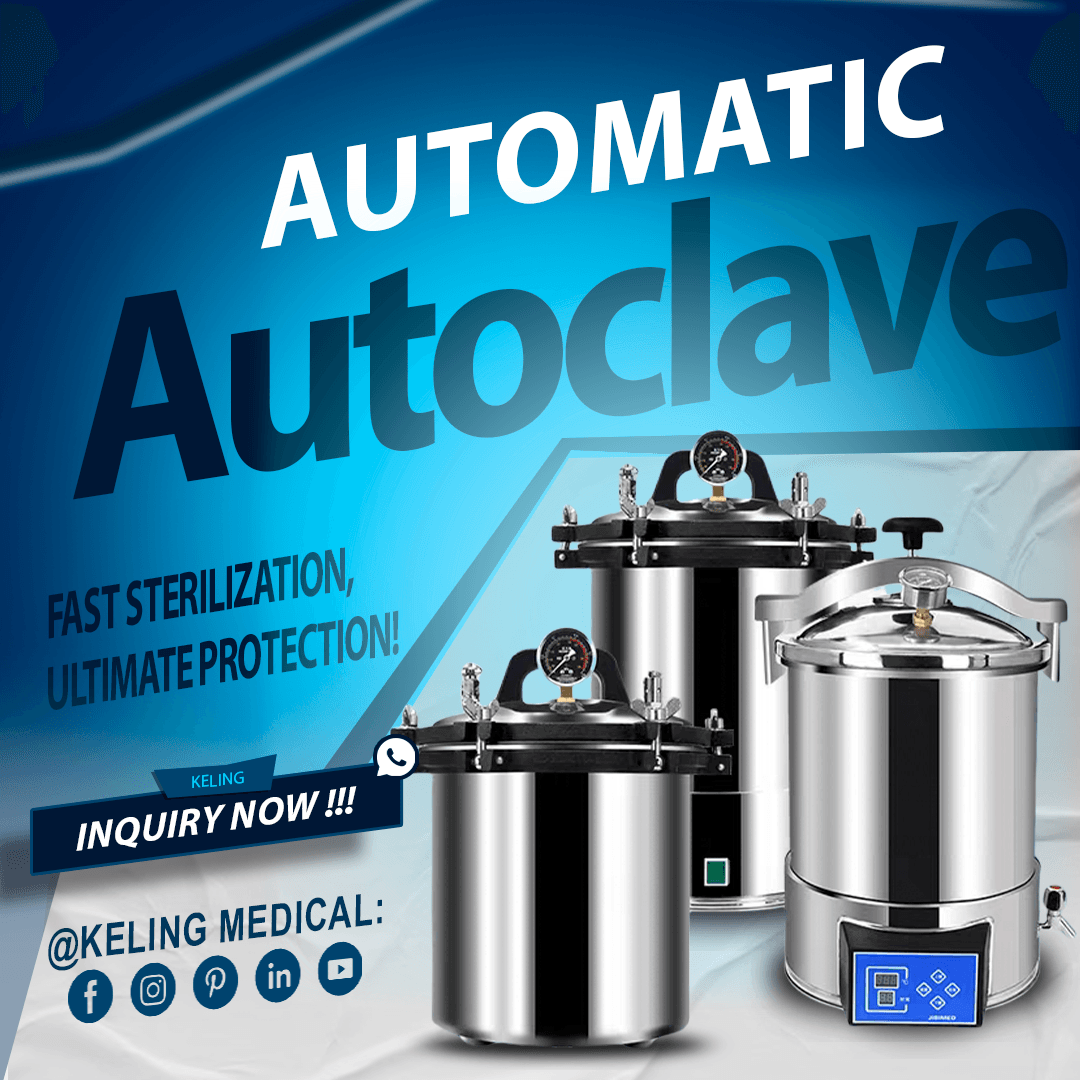
This comprehensive guide serves as an educational resource for supply chain professionals who want to expand their understanding of this crucial medical concept. This article covers the meaning of autoclave along with its historical background and operational role in healthcare settings for both those expanding product portfolios and advising clients on sterilization equipment. The comprehensive 2000-word content provides essential insights that will strengthen your services while helping healthcare providers maintain superior infection control standards.
The word “autoclave” is derived from the Greek words “auto,” which means self, and “clavis,” which stands for key or lock. The device’s design features a self-locking mechanism that prevents dangerous operation conditions during high-pressure use. An autoclave operates as a sterilization machine which subjects equipment and materials to high-pressure saturated steam at increased temperatures. Through this sterilization method all microbial forms such as bacteria, viruses, fungi and resistant spores get destroyed to make items safe for sensitive settings.
Distributors and dealers need to understand the broader implications of an autoclave rather than its basic translated meaning. This equipment serves as an essential component of infection control systems and receives global trust for preventing healthcare-related infections. Understanding this definition allows you to effectively demonstrate to clients how these machines become essential tools for protecting patient and staff safety in multiple medical environments.
Before autoclaving became linked to sterilization processes in the late 19th century its concept originated from 17th-century pressure cooker devices. The autoclave started as a way to fight infections in clinical and research environments before becoming a dependable solution for sterilization. The term autoclave became a reference to both the equipment and the pressurized steam decontamination method.
Business partners can establish trust with customers by explaining how the autoclave’s meaning has developed alongside public health improvements throughout more than one hundred years. Pointing out this historical legacy demonstrates the established effectiveness of these devices which reassures clients about their dependable performance in current medical applications.
The term autoclave holds additional significance within the healthcare field beyond its basic technical definition. The term autoclave represents a pledge to maintain safety standards while ensuring sterile conditions and offering solutions for ongoing infection control problems. The term offers procurement specialists and dealers a chance to fulfill essential client requirements through adherence to sterilization regulatory standards. Distributors who grasp the broader significance of autoclaves can market these machines as essential elements of infection prevention systems rather than mere tools.
The concept of an autoclave serves to illustrate its practical functionality.
Proper understanding of the term autoclave requires a clear connection to its practical applications. An autoclave generates a sterilizing atmosphere through high-pressure steam at temperatures ranging between 121°C (250°F) and 134°C (273°F) while maintaining pressure levels from 15 to 30 psi (pounds per square inch). This environment causes proteins to denature and destroys cellular structures in microorganisms to achieve full sterilization. The built-in self-locking mechanism ensures the chamber stays sealed during use to protect users from dangerous conditions.
Distributors need to explain to clients how the autoclave term signifies dependable and secure sterilization procedures. Demonstrating the connection between the term and its operational mechanism allows clients to understand the engineering principles that drive the device’s ability to produce reliable and measurable infection control outcomes.
An autoclave fundamentally functions through sterilization which involves completely removing all microbial organisms from both instruments and various materials and waste products. The autoclave stands out from boiling and chemical disinfectants because its moist heat under pressure penetrates complex surfaces and materials to achieve high effectiveness. Healthcare facilities focus on equipment that ensures complete sterilization because distributors use this feature as their primary selling point to protect patients and staff from infections.
Distributors who understand the meaning of autoclave can effectively respond to client inquiries regarding safety and effectiveness. Emphasizing sterilization as the primary feature allows you to establish these devices as the top choice for decontamination which attracts healthcare facilities of various types and scales.
The definition of autoclave has grown to include diverse designs and applications as technological progress continues. The definition of autoclave now extends beyond classical pressure chambers to include advanced equipment with digital controls and automated safety features. Distributors need to stay informed about this development to provide clients with current solutions that address contemporary healthcare requirements. You can stand out in the competitive market by demonstrating how your term now includes advanced technological innovations.
Different autoclave devices fall under this category.
The initial definition of autoclave emerged from gravity displacement models which function by allowing steam to rise and push out cooler air through a vent in the sterilization chamber. The units function best for sterilizing non-porous solid materials such as metal tools and glass items because they work with normal temperature and pressure settings. For clients requiring basic sterilization solutions distributors should advocate gravity displacement models since they offer easy operation and low cost which aligns with the basic definition of an autoclave.
The definition of autoclave extends to pre-vacuum and high-vacuum systems where a vacuum pump evacuates air before steam is applied. The pre-vacuum system ensures proper steam penetration for wrapped items, porous materials, and lumened instruments so they can be used in bigger facilities or surgical centers. Distributors who understand the advanced meaning of autoclave can offer sophisticated sterilization solutions to clients with complex needs while fulfilling the promise of safety and efficacy.
Steam-flush pressure-pulse autoclaves represent a modern advancement where steam injections and pressure pulses alternate to improve air removal and steam penetration. These units deliver reliable sterilization for diverse loads and quick processing time. Distributors can promote these units as adaptable solutions for efficiency-seeking customers which demonstrates the evolving application of autoclave technology to meet diverse operational demands.
Autoclave technology includes equipment that varies in size from small benchtop systems for clinics and dental offices to extensive units suitable for hospitals and industrial applications. The array of autoclave sizes demonstrates the term’s adaptability to various sterilization volume requirements. Distributors must evaluate facility limitations and processing demands to guide customers towards the right size autoclave that delivers practical and scalable solutions for all situations.
The autoclave term applies to medical sterilization most often but also describes similar processes in research labs as well as veterinary care and tattooing businesses where maintaining cleanliness is essential. Sterilizing equipment, media, and waste in various environments increases the significance of the term ‘autoclave’. Autoclave’s flexibility allows distributors to reach more clients by demonstrating its contamination control applications across multiple industries.
The fundamental concept behind an autoclave involves a sealed chamber with self-locking mechanisms which contains high-pressure conditions safely throughout operation. The term’s etymology demonstrates that this feature provides protection for users against burns and pressure-related accidents. Autoclave distributors must always communicate this safety feature to clients because it demonstrates the product’s dependable design and its focus on user safety which defines what autoclave means.
What defines an autoclave is its capability to produce high-pressure steam which allows the machine to sterilize materials using moist heat. Precise temperature and pressure levels during the process are maintained by heating elements and sensors. Distributors should highlight steam generation capabilities to clients since this technology delivers complete decontamination to match autoclave standards.
Advanced control systems featuring digital panels and automated cycle settings enable users to observe and tailor sterilization parameters in modern autoclave designs. The term benefits from enhanced precision and improved user-friendliness through these features. Distributors have the opportunity to present these technological advances to clients which demonstrate the evolution of autoclave to emphasize operational efficiency alongside compliance.
The term autoclave includes essential safety features such as pressure relief valves, automatic shut-offs and door interlocks that actively prevent accidents during device operation. The implemented safety systems restrict device function to secure operational boundaries. It is crucial for distributors to emphasize these protective elements to their clients because they establish trust and security for autoclave operations within high-risk settings.
Autoclave meaning includes practical elements such as water reservoirs for steam creation and drainage systems for waste disposal. To avoid mineral accumulation and ensure optimal performance devices must use distilled or deionized water. Distributors should provide maintenance guidance to clients so these systems maintain operational integrity throughout their lifespan.
Autoclaves provide essential sterility assurance by eliminating harmful pathogens which helps to prevent infections in healthcare settings. Reliability remains essential for protecting patients and staff and stands as a fundamental concern for every healthcare facility. This feature serves as a primary selling point for distributors who connect with buyers who prioritize infection control and regulatory compliance.
The meaning of autoclave represents versatility because these machines can sterilize numerous items including surgical tools and laboratory materials and biohazardous waste. Their versatility allows these devices to function effectively in different environments. By emphasizing its flexibility, distributors can attract multiple client segments while enhancing the marketing effectiveness of the term.
A proper understanding of autoclave requires an appreciation for its economic benefits. These devices enable instrument reuse through sterilization to achieve long-term cost savings over disposable alternatives. Distributors should focus on the cost advantage when targeting clients who prioritize budget management.
Autoclaves maintain their significance because they provide standardized sterilization methods necessary for meeting healthcare regulations. Facilities can meet rigorous standards and successfully complete audits through this approach. Distributors should promote autoclaves as essential equipment that assists clients with sustaining their operational licenses and maintaining safety requirements.
Autoclaves designed with modern features offer quick processing cycles along with automation that minimizes operating interruptions and boosts efficiency in active workspaces. Distributors should demonstrate to high-throughput facilities how an autoclave’s function results in real-world operational improvements.
Users face difficulties in both comprehending and effectively applying the term autoclave.
The operation of autoclaves appears complicated to people who do not understand their function which increases the likelihood of errors and incorrect use. To ensure clients confidently use the equipment, distributors need to supply training resources and user guides that explain the term and its application.
Autoclave acquisition usually requires substantial initial capital outlay and dedicated installation space particularly when selecting bigger models. Distributors need to partner with clients to manage costs and space limitations by proposing autoclave solutions that fit their unique requirements.
The operation of autoclave equipment demands continuous maintenance and consumes both energy and water which together increase operational costs. Through maintenance plans or energy-efficient solutions distributors enable clients to handle operational requirements while maintaining the term’s advantages.
Several materials cannot endure the conditions associated with autoclaving which puts them at risk of damage during the sterilization process. Clients need education from distributors about compatible materials and proper cycles to avoid problems while maintaining safe and effective autoclave usage.
Regional differences in regulations lead to varying definitions of autoclave and its standards. To become effective advisors in diverse markets, distributors need to keep up-to-date with local regulations which makes their advice relevant and compliant.
Distributors need to understand the meaning of autoclave to meet essential sterilization requirements for infection control in healthcare.
Distributors who understand the definition of autoclave can better address essential healthcare sterilization needs which are fundamental for infection control. When you focus on this terminology you can serve client priorities, positioning your business as a major supplier in the field.
The need for autoclave-related equipment grows due to increasing healthcare investments and tougher safety standards. Distributors have the chance to grow their market share through offering solutions that reflect autoclave’s essential properties.
Distributors who educate clients about autoclave functions and provide related equipment establish themselves as trustworthy experts. Having expertise allows companies to form durable partnerships with clients that result in repeat business which enhances their standing in the industry.
The vital role of distributors in providing infection prevention tools aligns with the fundamental purpose of autoclave functionality. When you market these solutions you enhance patient safety and public health which gives your business mission a meaningful direction.
Grasping what autoclave means is vital for medical equipment distributors, dealers, and procurement specialists aiming to provide essential sterilization solutions to healthcare providers. Derived from terms signifying self-locking safety, autoclave refers to a device that uses high-pressure steam to eliminate microorganisms, ensuring safety and hygiene in medical and laboratory environments. By incorporating equipment associated with this term into your portfolio and educating clients on its significance, you can address critical infection control needs while positioning your business as a leader in the market.
If you’re eager to explore high-quality sterilization solutions tied to the meaning of autoclave or have questions about their benefits for your clients, we’re ready to assist. Contact us via E-Mail, einschalten WhatsApp, oder besuchen Sie unsere Website für weitere Informationen. Unser Team freut sich darauf, Ihnen dabei zu helfen, die perfekte Ausrüstung für die Anforderungen Ihres Marktes zu finden.
1. What does autoclave mean in simple terms? Autoclave means a device that sterilizes items using high-pressure steam, derived from terms indicating a self-locking mechanism for safety during operation.
2. How does the term autoclave relate to healthcare? It refers to equipment crucial for sterilizing medical instruments and materials, preventing infections by eliminating pathogens in healthcare settings.
3. What types of devices fall under the term autoclave? The term includes gravity displacement, pre-vacuum, steam-flush pressure-pulse units, and various sizes like benchtop or large-capacity models for different needs.
4. Why is understanding what autoclave means important for distributors? It helps distributors meet client needs for infection control, offering equipment that ensures sterility and aligns with healthcare safety standards.
5. What challenges are associated with the term autoclave? Challenges include complexity for new users, investment costs, maintenance demands, and material compatibility, which can be addressed with proper guidance.
6. How can distributors benefit from focusing on the meaning of autoclave? By prioritizing solutions tied to this term, distributors address critical sterilization needs, tap into market growth, and build trusted client relationships.

Im Gesundheitswesen und in Laboratorien ist die vollständige Entfernung gefährlicher Mikroorganismen von allen Geräten und Materialien ein wichtiger Schritt zum Schutz der Patienten und zur Bekämpfung von Infektionen. Sterilisation im Autoklaven

Das Gesundheitswesen unterliegt strengen Vorschriften und erfordert die Sterilität medizinischer Instrumente, um Patienten vor Infektionen zu schützen und Sicherheitsstandards einzuhalten. Ein leistungsstarker Autoklav-Sterilisator ist das Herzstück von

Autoklaven sind im Gesundheitswesen unverzichtbar, da sie medizinische Instrumente und Materialien sterilisieren und so zur Eindämmung von Infektionen beitragen. Regelmäßige Wartung und ordnungsgemäße Reinigung entscheiden darüber, ob diese Geräte effektiv funktionieren. Medizinische

Autoklaven sind unverzichtbare Geräte im Gesundheitswesen und bei der Infektionskontrolle zur Aufrechterhaltung der Sterilität von medizinischen Instrumenten und Laborgeräten sowie anderen lebenswichtigen Materialien. Lieferanten und Beschaffungsexperten für medizinische Geräte

Gesundheitsdienstleister müssen der Sterilität von Instrumenten und Materialien Priorität einräumen, um Infektionen wirksam zu verhindern und die Gesundheit der Patienten zu schützen. Die Sterilisation im Autoklaven erweist sich als eine außerordentlich zuverlässige Methode, die in vielen Bereichen Anwendung findet

In der Gesundheitsbranche sind strenge Maßnahmen zur Infektionskontrolle erforderlich, und daher sind bestimmte Begriffe und Instrumente für die Gewährleistung von Sicherheit und Hygiene entscheidend. In medizinischen und Laboreinrichtungen, die sterile Bedingungen erfordern